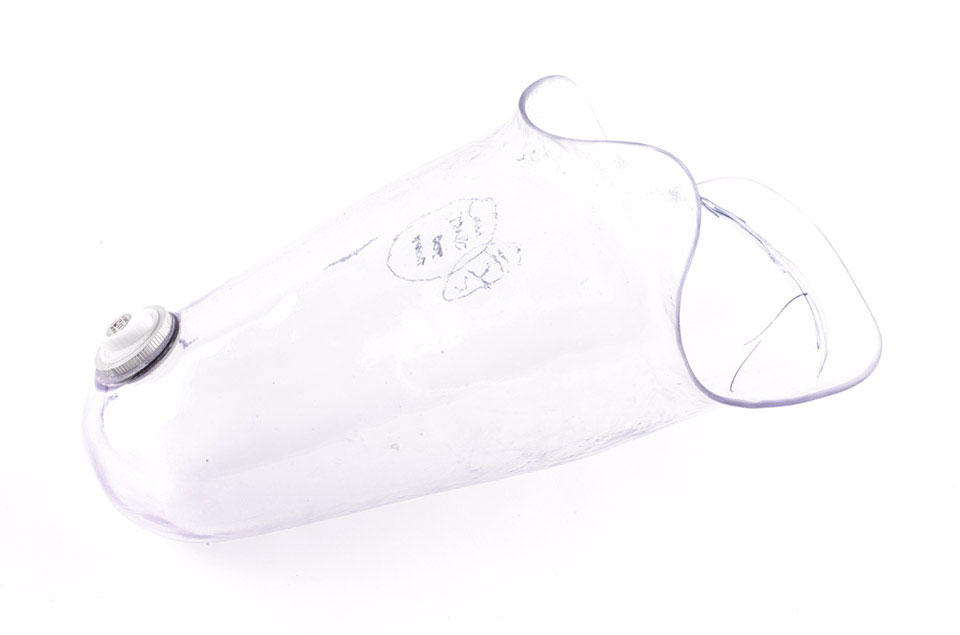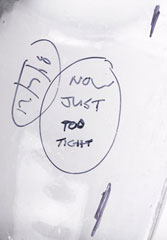
Online Collection
Clear diagnostic socket for right transfemural above the knee amputation, 2018
Produced by Blatchford company technicians at the Defence Medical Rehabilitation Centre, Headley Court, Surrey, 2018.
After making a plaster cast of the residual limb of a patient, the Prosthetics Department at Headley Court create a made-to-measure clear diagnostic 'check' socket such as this one, to test the fit on the patient before creating the final carbon fibre socket. It is clear so that they can easily see the fit. This one is marked as being too tight.
Improvised Explosive Devices (IEDs) were widely used by insurgents in Afghanistan and Iraq to inflict lethal and debilitating injuries on Coalition forces during the conflicts that developed after the terrorist attacks on the United States on 11 September 2001. A Ministry of Defence report, 'Amputation Statistics 1 April 2014 - 31 March 2019', published on 1 August 2019, records that from 7 October 2001 to 31 March 2019, 333 UK service personnel, serving in the Afghanistan or Iraq, suffered injuries that included a traumatic or surgical amputation.
NAM Accession Number
NAM. 2019-02-12-1-1
Copyright/Ownership
National Army Museum Copyright
Location
National Army Museum, Study collection
Object URL
https://collection.nam.ac.uk/detail.php?acc=2019-02-12-1-1



